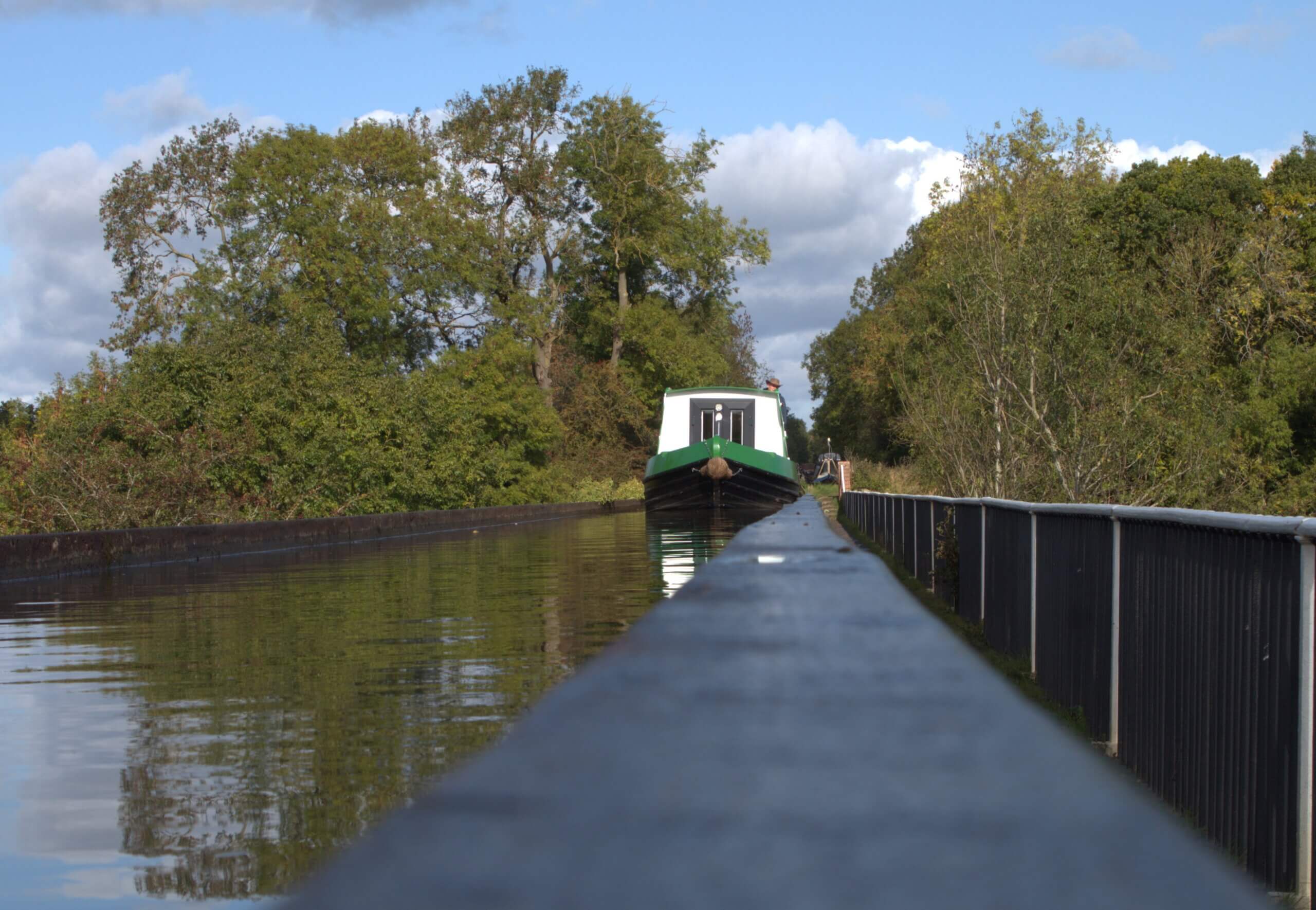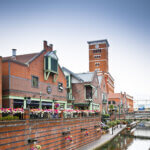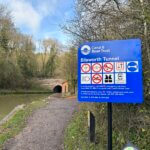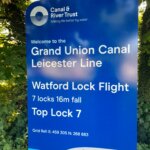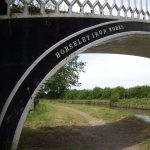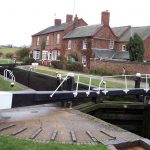A residential group holiday with LNBP provides the opportunity to see and experience so many diverse and wonderful sights which are dotted along the canal networks here in central England.
Here we have picked a number of great places with particular historical significance and etched in waterways heritage.
Hatton Locks
The Hatton Locks or Hatton Flight are a flight of 21 locks on the Grand Union Canal in Hatton, Warwickshire.
Affectionately known as the ‘Stariway to Heaven’ the flight spans less than two miles of canal, and has a total rise of 45 metres.
These state of the art locks were built at Hatton to fight off stiff competition from the roads and railways and widened in the 1930s. Getting through them – remember there are 21 of them – is no mean feat and an achievement in itself, so give yourself plenty of time and preparation to navigate them all.
Birmingham Canals
One of the most intricate canal networks in the world, the city’s extensive canal network is often said to have more miles of canal than Venice and played a crucial role in its industrial growth.
The canals were the life-blood of Victorian Birmingham and the Black Country. At their height, they were so busy that gas lighting was installed beside the locks to permit round-the-clock operation. Boats were built without cabins for maximum carrying capacity, and a near-tidal effect was produced as swarms of narrowboats converged on the Black Country collieries at the same time every day.
Today, Birmingham’s canals have been revitalized into scenic walkways, lined with bars, cafes, and visitor attractions. The Gas Street Basin is a particularly popular spot where visitors can see colourful boats and historic canal architecture sit side-by-side with vibrant modern restaurants, cafes and bars.
Read more about the route from Braunston to Birmingham here
Hawkesbury Junction


Hawkesbury Junction is the northern limit of the Oxford Canal where it meets the Coventry Canal, near Hawkesbury Village, Warwickshire.
Its alternative name, Sutton Stop, arises from the name of a family which provided several lock keepers there in the nineteenth century. In commercial carrying times, the junction was a major rendezvous for working boats awaiting orders for their next cargo from the many pits in the area. A stop lock on the Oxford Canal isolates the water levels of the two original canal companies, with the Oxford being a few inches higher.
The most immediately striking feature in what is now a conservation area is the elegant bridge over the actual junction of the two canals. This cast iron structure is a fine example of the Victorian engineer’s art, and has a span of 15.2 m (50 ft).
Edstone Aqueduct
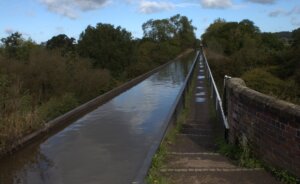

Located in Shakespeare Country between the Warwickshire villages of Wotton Wawen to the north and Wilmcote to the south is the longest cast iron aqueduct in England spanning 475 feet (145 metres) of rural countryside. This aqueduct is located on the South Stratford Canal.
Completed in 1816, the aqueduct crosses a minor road, a stream and a railway carrying trains on the Birmingham – Stratford-upon-Avon train line, in fact many years ago, a pipe linked the canal to a point on the railway to enable steam locomotives to draw water.
An unusual feature of this structure is that the tow path runs along the base of the 4’9” (1.5 metre) cast iron trough giving a different view of oncoming boats.
The structure holds Grade 2 listed status. If you are ona trip or take the boats from Braunston to Stratford, take a few moments to appreciate the engineering that created this fine aqueduct.
Napton Locks

Napton-on –the- Hill, as it is properly known, is as its title suggests a hillside village, watched over by its majestic Windmill which can be seen for many miles around.
The Grand Union and Oxford Canal form a moat like quality at the foot of the hill, with a set of eight locks being some of the nicest locks around, set as they are in beautiful peaceful countryside and climbing 49 feet.
For such a small village, it offers a surprisingly large number of amenities which includes a village store including post office, general store and coffee shop, play park, plus canal side shops and marina.
Stoke Bruerne and Blisworth Tunnel
Stoke Bruerne is lovely village of which its canalside setting becomes a hive of activity especially during spring and summer.
Here you will a Canal Museum which is located just off the canalside path in a historic Grade II listed corn mill and has three floors of waterway heritage and panoramic views, a café and gift shop. Outside the museum you can normally find the historic boat called ‘Sculptor’ which was built in 1935 and still going strong.
To get here (and back to Braunston) is to navigate through another historic tunnel, the Blisworth Tunnel, which at 3,075 yards (2,811 meters) long is the longest wide, freely navigable tunnel in Europe (it’s wide enough for two narrowboats to pass in opposite directions). It is the third-longest navigable canal tunnel in the UK, after Standedge and Dudley Tunnels and the ninth-longest canal tunnel in the world!
Watford Locks
This group of seven locks on the Leicester Line of the Grand Union Canal in Northamptonshire is formed (looking from the south), of two single locks, a staircase of four, and a final single lock.
The locks are hemmed in by the A5 road, the M1 motorway, and the West Coast Main Line railway, which all fit through the narrow Watford Gap, between two hill systems. The locks are usually manned to prevent water shortages in the ponds between the locks and to speed up the process of boats getting through them (there is a queueing system in place during peak periods)
The keeper also ensures the locks run smoothly and quickly. It should take approximately 45 minutes to complete this flight; it is made quicker by the fact that the locks are single beam and the gates are light.
Foxton Locks


Further up the Grand Union’s Leicester Line, Foxton Locks is a Grade II listed site and home to the longest, steepest staircase flight of locks in Britain.
Each year, over 400,000 visitors experience the rich heritage of the site, including the remains of the unique Inclined Boat Lift, listed as a Scheduled Ancient Monument. Also located at the site are two pubs, two cafés, and the historic Canal Museum located in the Boilerhouse run by the Foxton Inclined Plane Trust.
Read more about the route from Braunston to Foxton Locks via Watford Locks here
Braunston – historic junction, locks and tunnel
- Inside Braunston Tunnel (pic: K Quinney)
Last but by no means least for this feature is Braunston, our mooring base and where the Grand Union Canal and Oxford Canal canals meet.
Braunston Marina, which you can see a stone’s throw from our boats are moored up, used to be a reservoir for the Grand Junction Canal. Water coming down the Braunston locks was collected and then pumped back up to the summit level. The pump, originally steam powered, and pump house, are still in place beside our mooring place and the initials GJC and 1897, the year of its build, can be seen in the chimney brickwork.
It’s here – at Bottom Lock – we have the first of the six locks of the Braunston flight onto the summit level of the main line of the canal before reaching the majestic Braunston Tunnel.
A true feat of engineering this, it opened in 1796 its construction was delayed by soil movement and it was probably the resulting movement that led to the tunnel having a slight ‘S’ bend.The tunnel is 2,042 yards (1,867 metres) in length.but has no towpath which means a walk over the top of the tunnel by the footpath if you are claustrophobic and don’t fancy going through it. Inside, it is 4.8 metres (16 ft) wide by 3.76 metres (12.3 ft) high providing just enough room for two 7 feet (2.1 m) beam boats to pass.
To go from one end of the tunnel takes you underground for approximately 25 minutes and it is well worth experience.
For more details about these great places and the routes to get to them, click here

